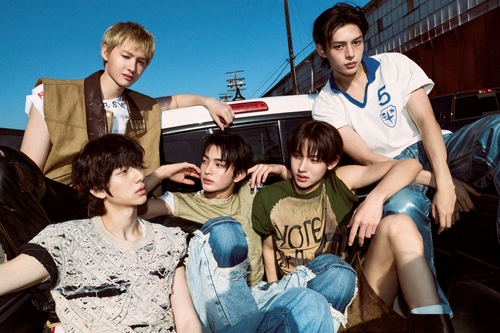The second half of 2025 marks an intense comeback season for many K‑pop rookies.
Several acts are breaking into global charts, drawing international attention.
The real test will be musical quality and long‑term fan support.
Industry opportunity and structural risk are visible at the same time.
“Golden age for rookies or the start of overcrowding?”
Overview
The comeback season runs from July through December 2025.
Rookie groups including Cortis, KickFlip, Hearts2Hearts, BABYMONSTER, and AHOF are returning with new albums and concepts.
Early chart positions and first reactions will be a thermometer for each group's future path.
For example, Cortis proved global potential by entering the Billboard 200 in a high position, while AHOF earned the “monster rookie” label with a second mini‑album just four months after debut (early streaming and concert sellouts helped that image).
The second half is a proving ground where rookies finalize their identity.
Plans for releases and how groups communicate with fans during these months often shape the next two years.
Therefore, observers must look beyond short‑term results and evaluate sustainability.
History and background
Waves of K‑pop rookies have come and gone for two decades.
Since the early 2000s, debut cycles and lineup reshuffles repeat every few years, and 2025 feels like another turning point.
Major agencies and indie labels now place newcomers differently, and global streaming plus international chart mechanics exert bigger influence.
Alongside that, investment models and how companies allocate funds have shifted.
“Global platforms and deeper funding have accelerated rookie launches.”
Ultimately, an agency’s business strategy and investment priorities shape the rookie landscape.
So policy frameworks and industry stability deserve attention too.
Faster‑forming fandoms and new revenue models are already changing how the whole business operates.
Major group cases
Examples set norms.
Cortis, backed by a large label, reached a top tier on the Billboard 200 through targeted overseas marketing and streaming strategies.
By contrast, AHOF built a strong local base through TV music shows and intimate fan concerts.

KickFlip and Hearts2Hearts compete on distinct fronts.
KickFlip foregrounds street culture and high‑energy performance to attract younger audiences, while Hearts2Hearts leans on emotive vocals and minimalist production to stand out.
BABYMONSTER focuses on visuals and choreography to expand a global fanbase.
Arguments in favor
Many rookies bring energy to the scene.
A surge of newcomers encourages creative competition and offers audiences a wider palette of music and concepts.
That expands choices for fans and drives artistic experimentation.
International chart success also raises K‑pop’s profile.
Big wins attract investment for follow‑up artists and strengthen the industry’s growth engine.
In short, short‑term wins can create positive ripple effects across the ecosystem.
Arguments against
However, the risks are substantial.
Too many debuts can saturate the market and fragment fandoms, weakening each group's ability to sustain itself.
Insufficient preparation and grueling schedules can lower musical quality and harm artists’ health.
“Uncontrolled debuts turn rookies into disposable products.”
Moreover, when agencies compete to recoup investments quickly, they may cut corners on long‑term album development or training time.
That approach can hurt overall quality in the industry.
Therefore, the balance between immediate hits and long‑term stability must be reassessed.
Fandom and market impact
Fandom equals economy.
When fans are spread across many groups, revenue streams split: ticket sales, merchandise, and streaming income are all affected.
That fragmentation can threaten the commercial viability of individual groups.
How groups engage their audience matters for long‑term loyalty.
Effective use of online platforms, social media, and exclusive fan content becomes a competitive edge.
At the same time, contract terms, accounting transparency, and tax rules merit review to match this new scale of fandom economics.
Concerns and remedies
Reform equals sustainability.
First, agencies should design multi‑year roadmaps and phased investment plans.
Second, systems must protect artists’ health and ensure adequate training and rest.
We need growth plans that favor stability over short‑term investment plays.
Third, industry‑level standard contracts and clearer revenue‑sharing rules would reduce disputes and increase trust.
Fourth, better fan engagement strategies can build loyalty while tempering over‑commercialization.
In practice, smaller agencies’ cash gaps can be eased by co‑investment, crowdfunding (fans funding projects), or collaborative business models.
Fan‑led support programs and regional concert circuits can diversify income and reduce dependence on a single hit.
Summary and outlook
This is a turning point.
The 2025 second‑half comebacks signal a new phase for the industry.
Successful cases offer hope, but the shadow of too much competition looms large.
Only structural reform and patient business planning will create a sustainable ecosystem.
The real challenge is aligning fandom, funding, strategy, and regulation.
Industry leaders, fans, and policymakers must begin balanced conversations to steer the market forward.
Conclusion
The core issue is sustainability.
Rookie comebacks can deepen musical variety and amplify global reach, but they can also produce unhealthy churn and overwork.
Thus, protecting artists and building structural resilience are as important as chasing immediate chart success.
In short, these comebacks are both opportunity and test.
Without industry standards and cooperative practices shaped by agencies, government, and fans, much potential could vanish.
Now is the time to redesign growth around sustainability.
What criteria will you use to judge a rookie group's success?
